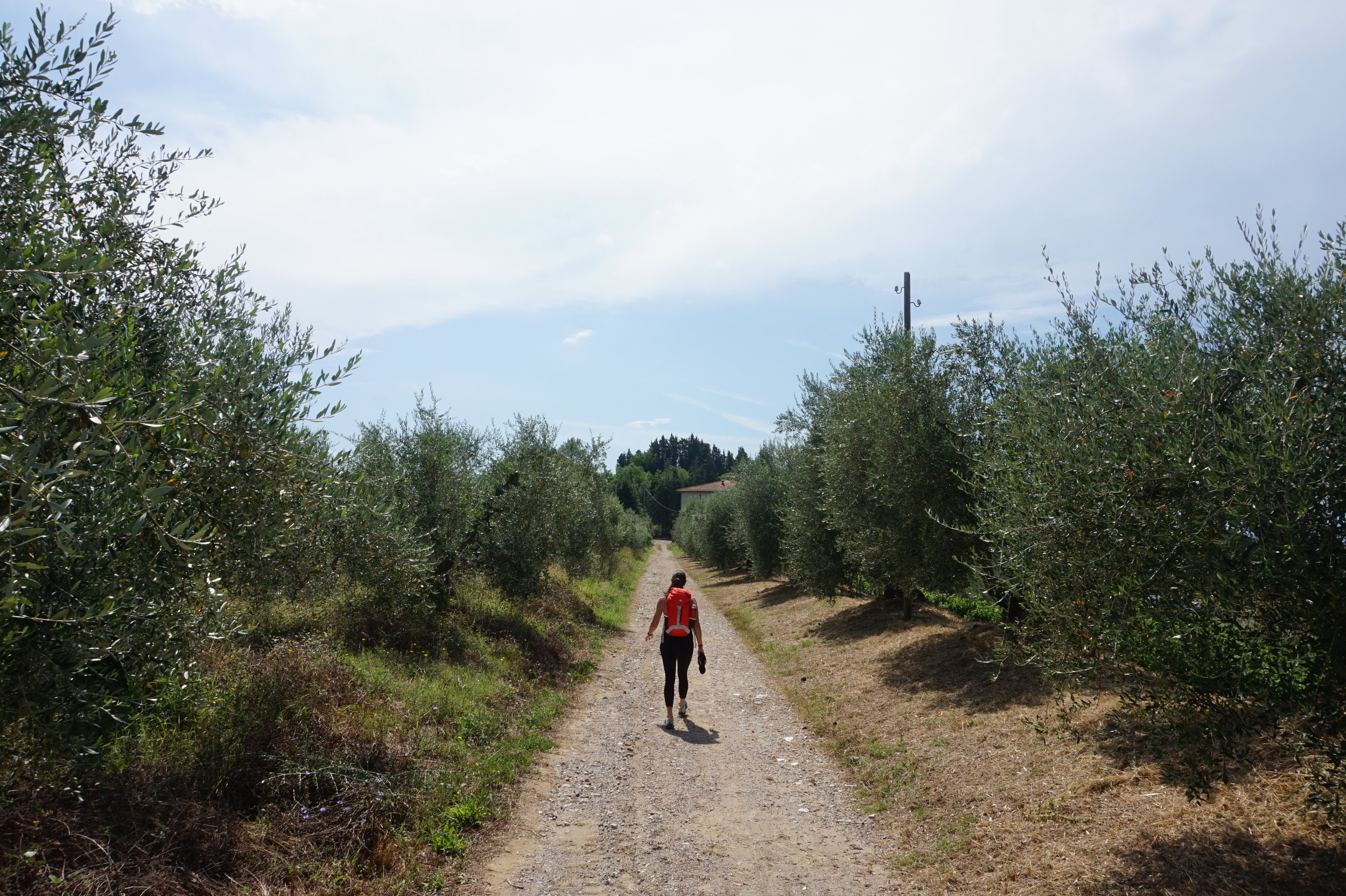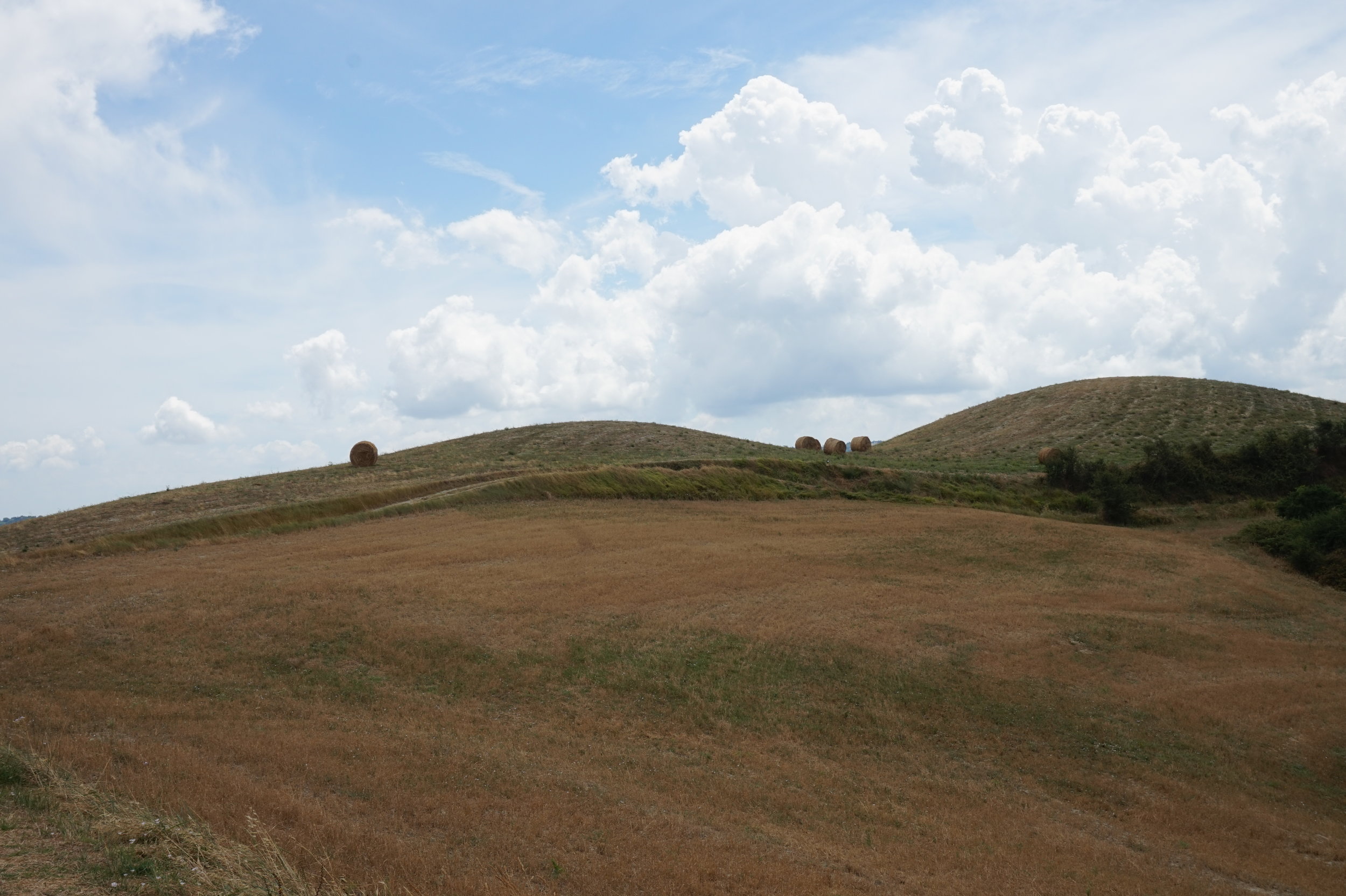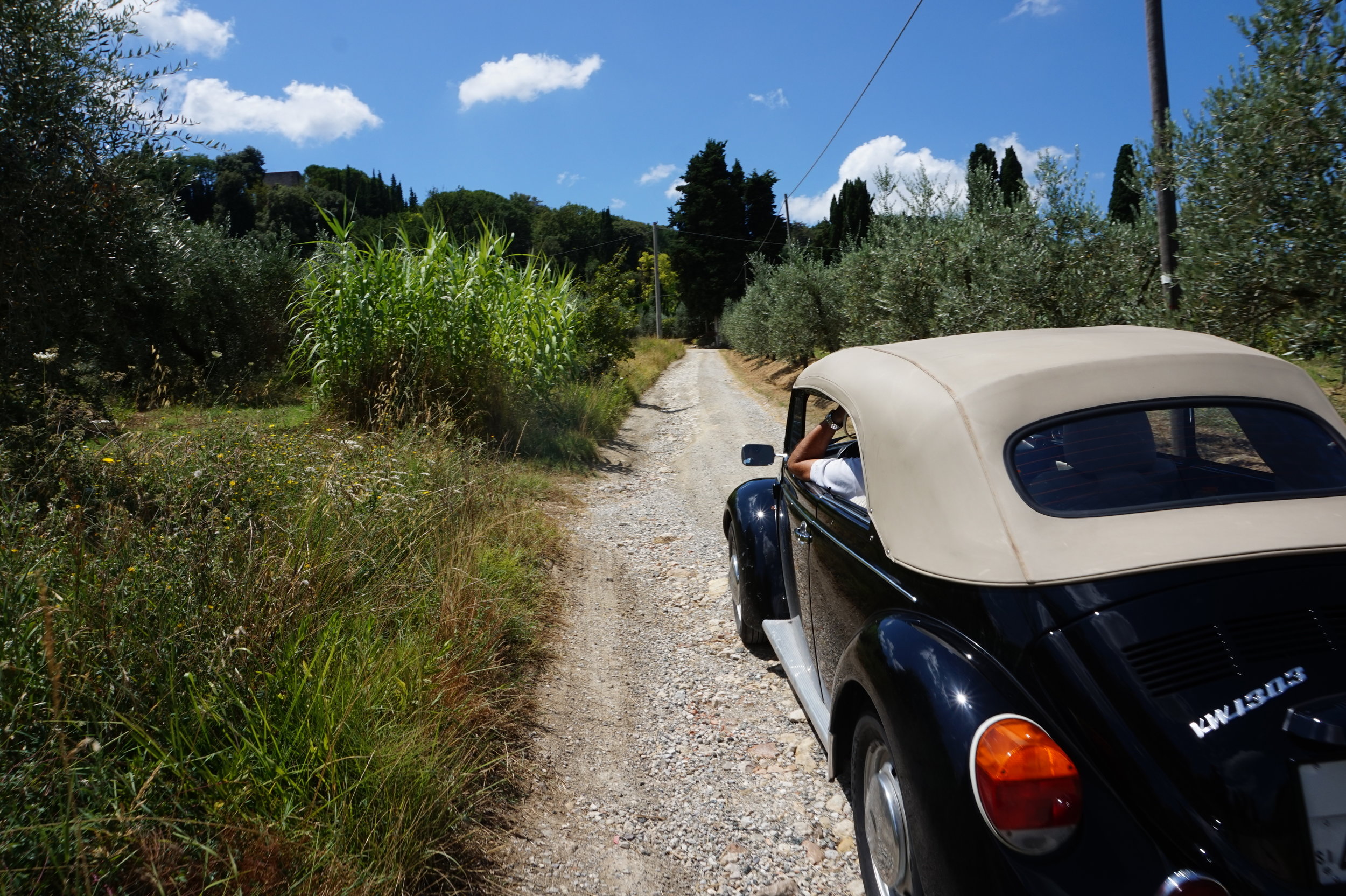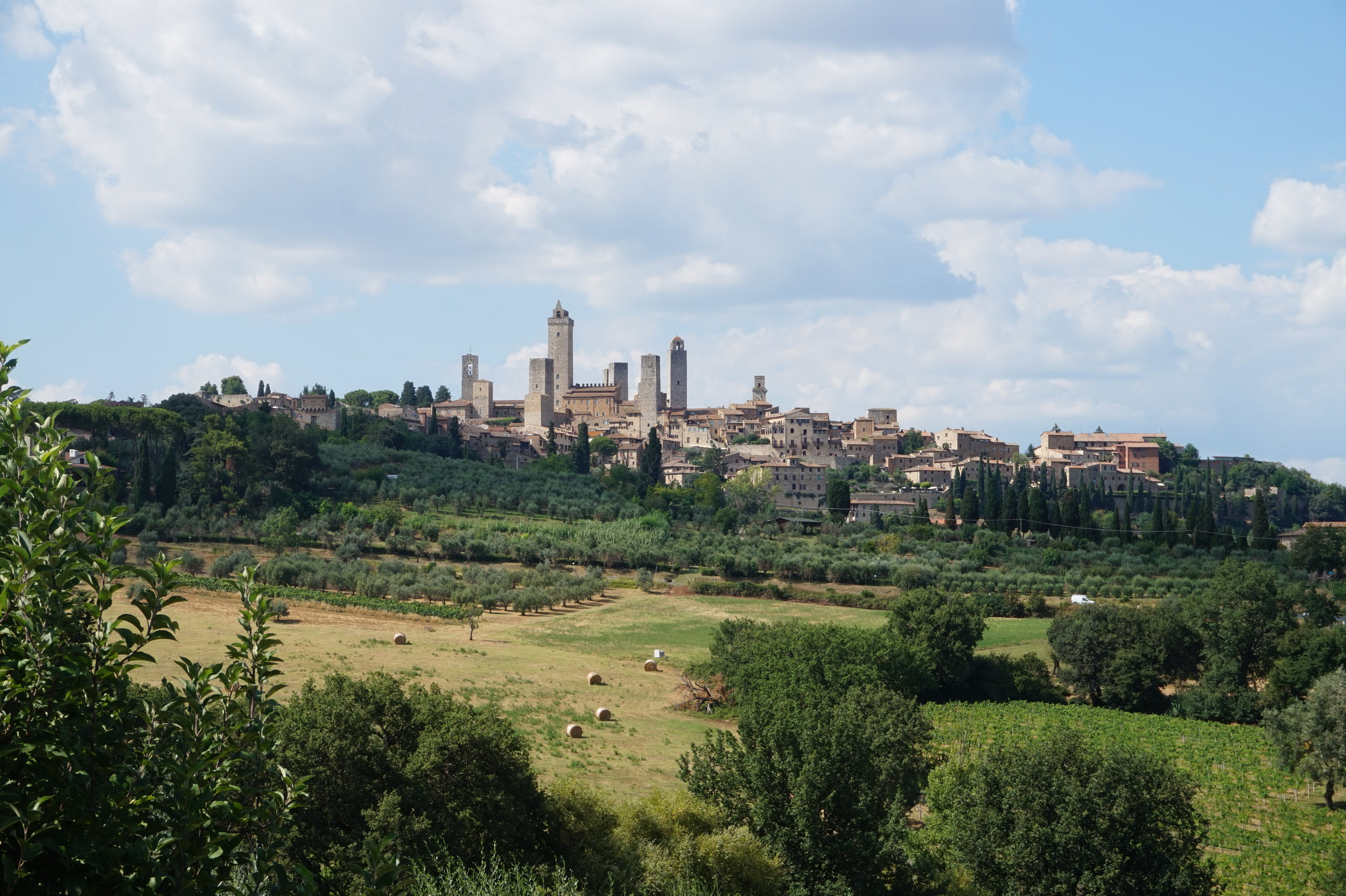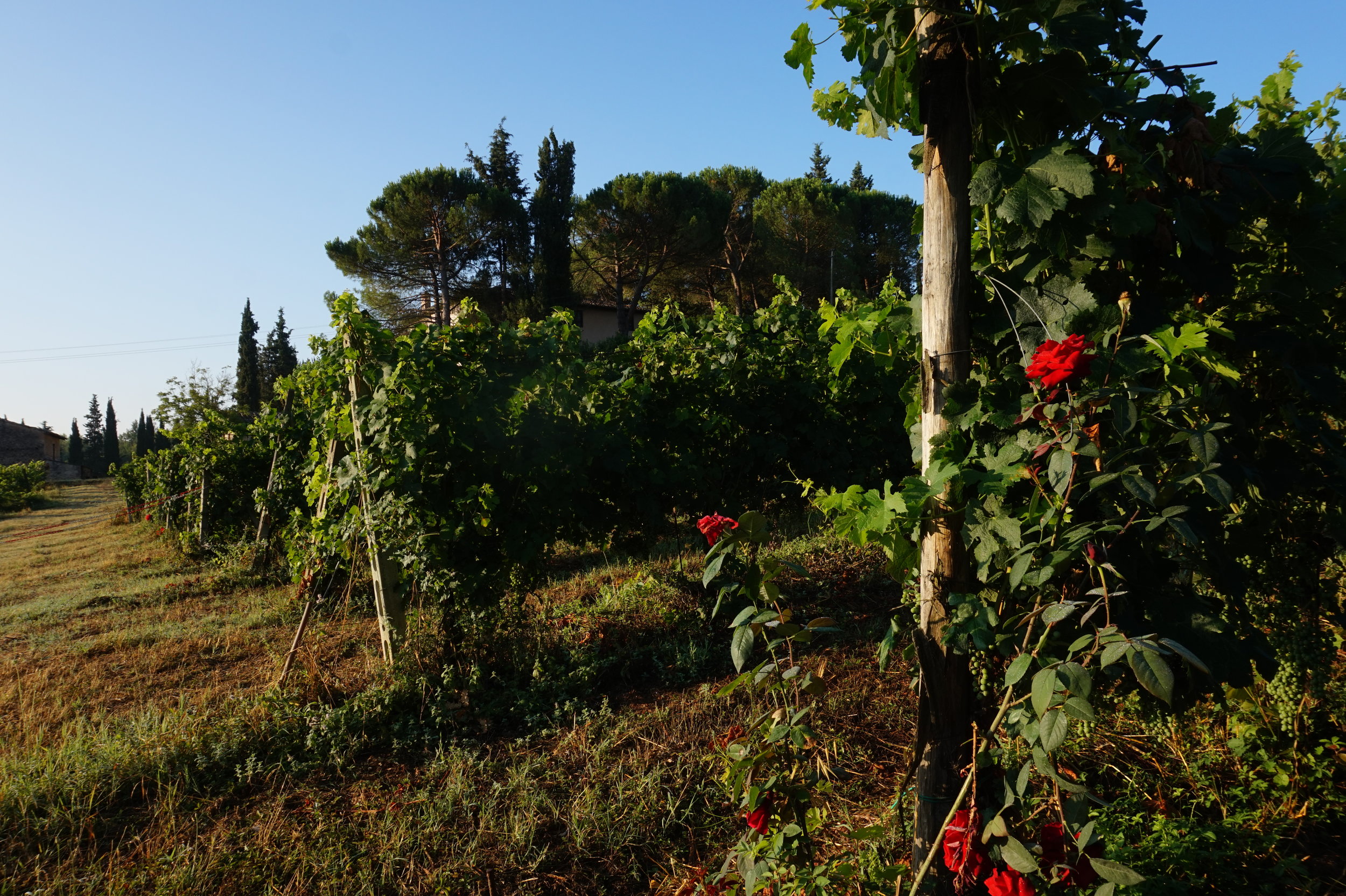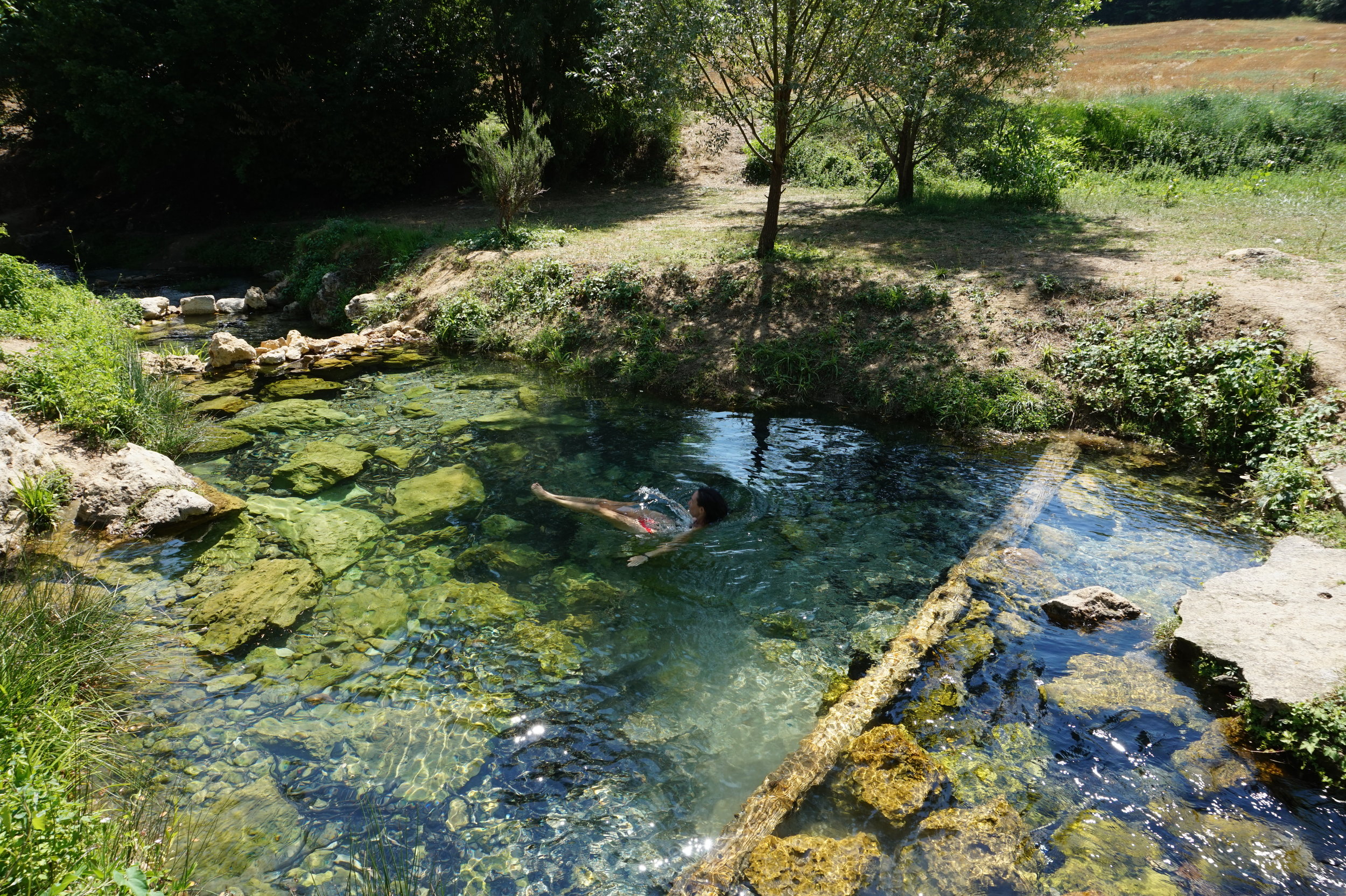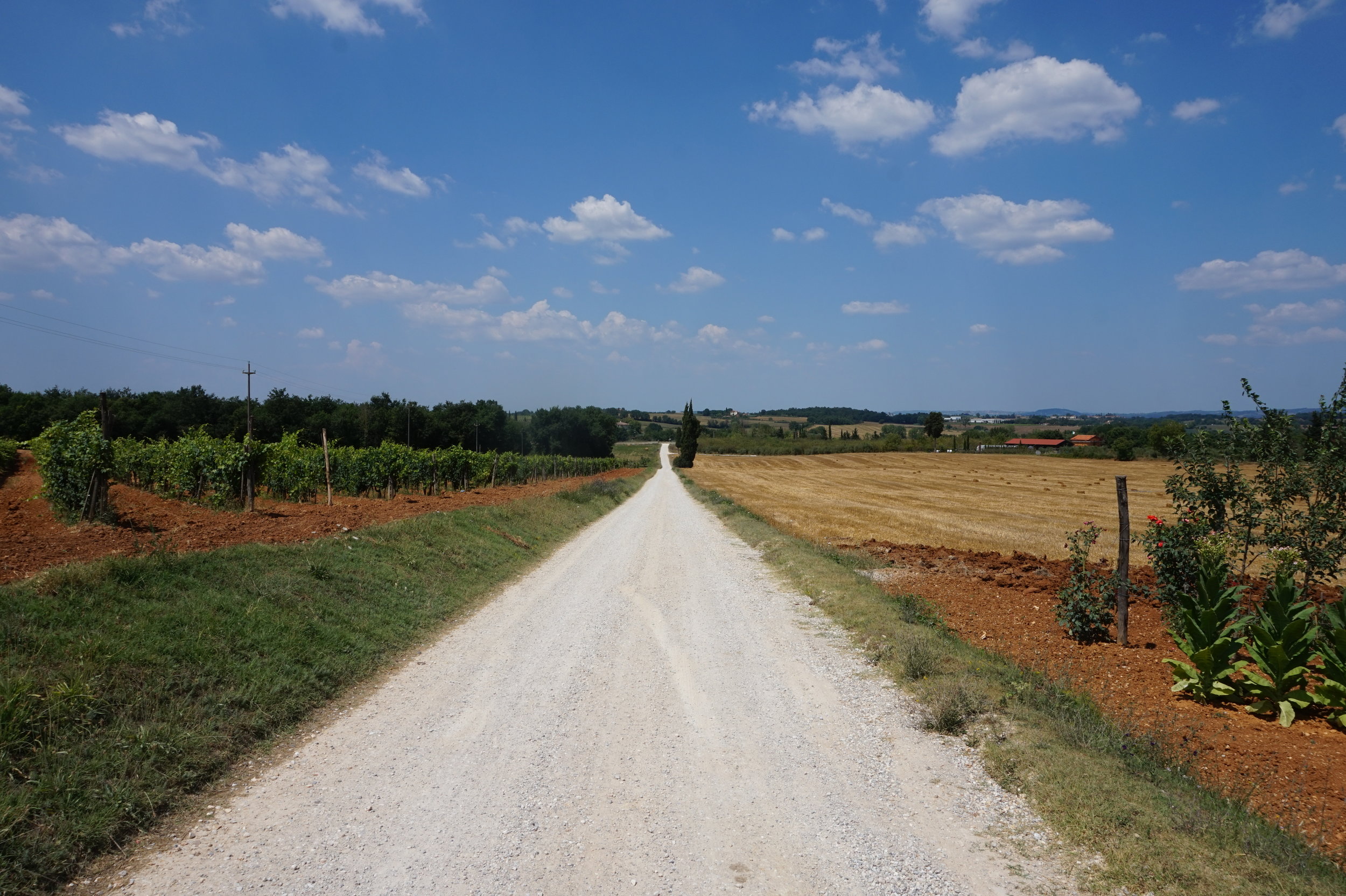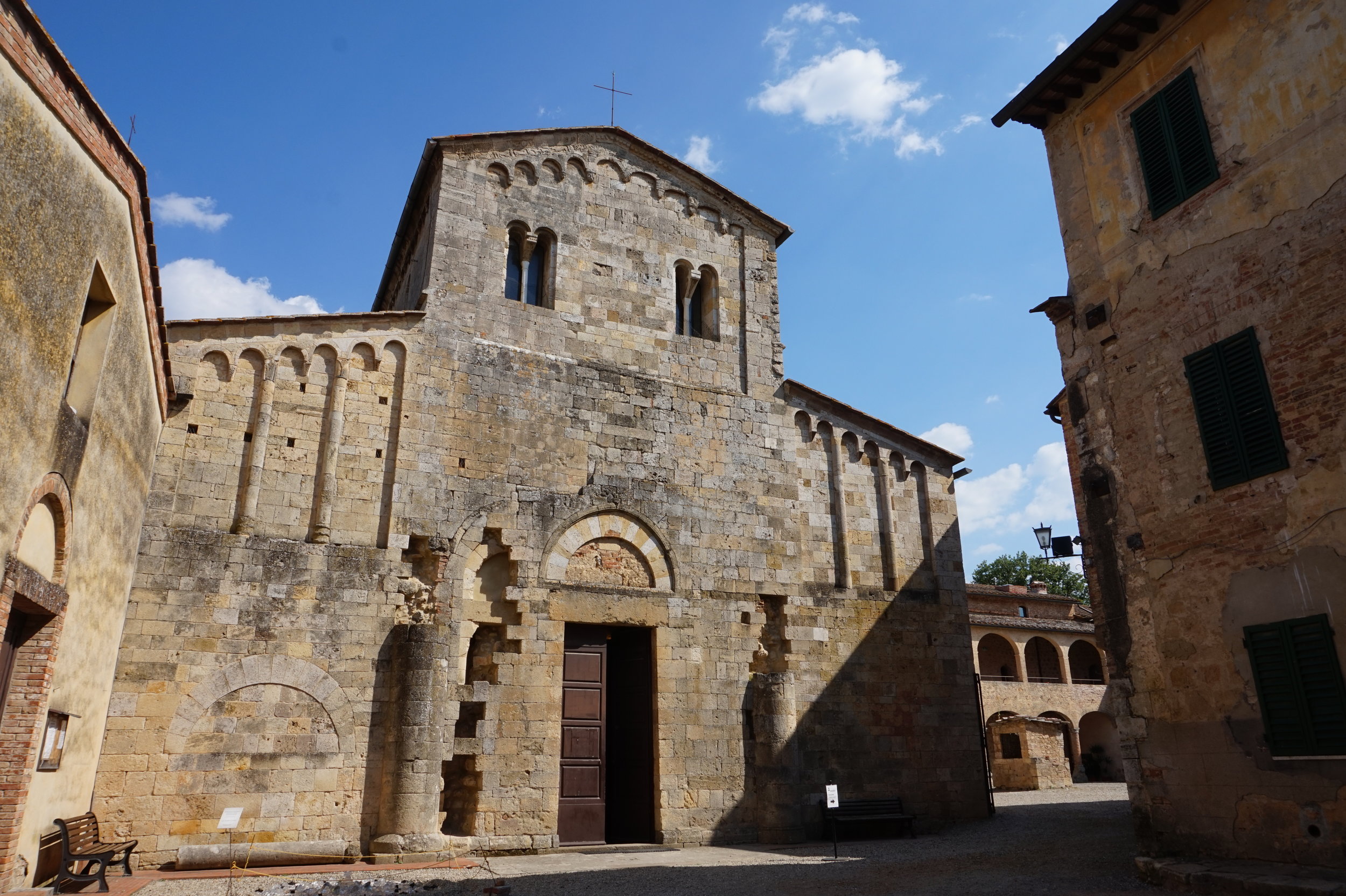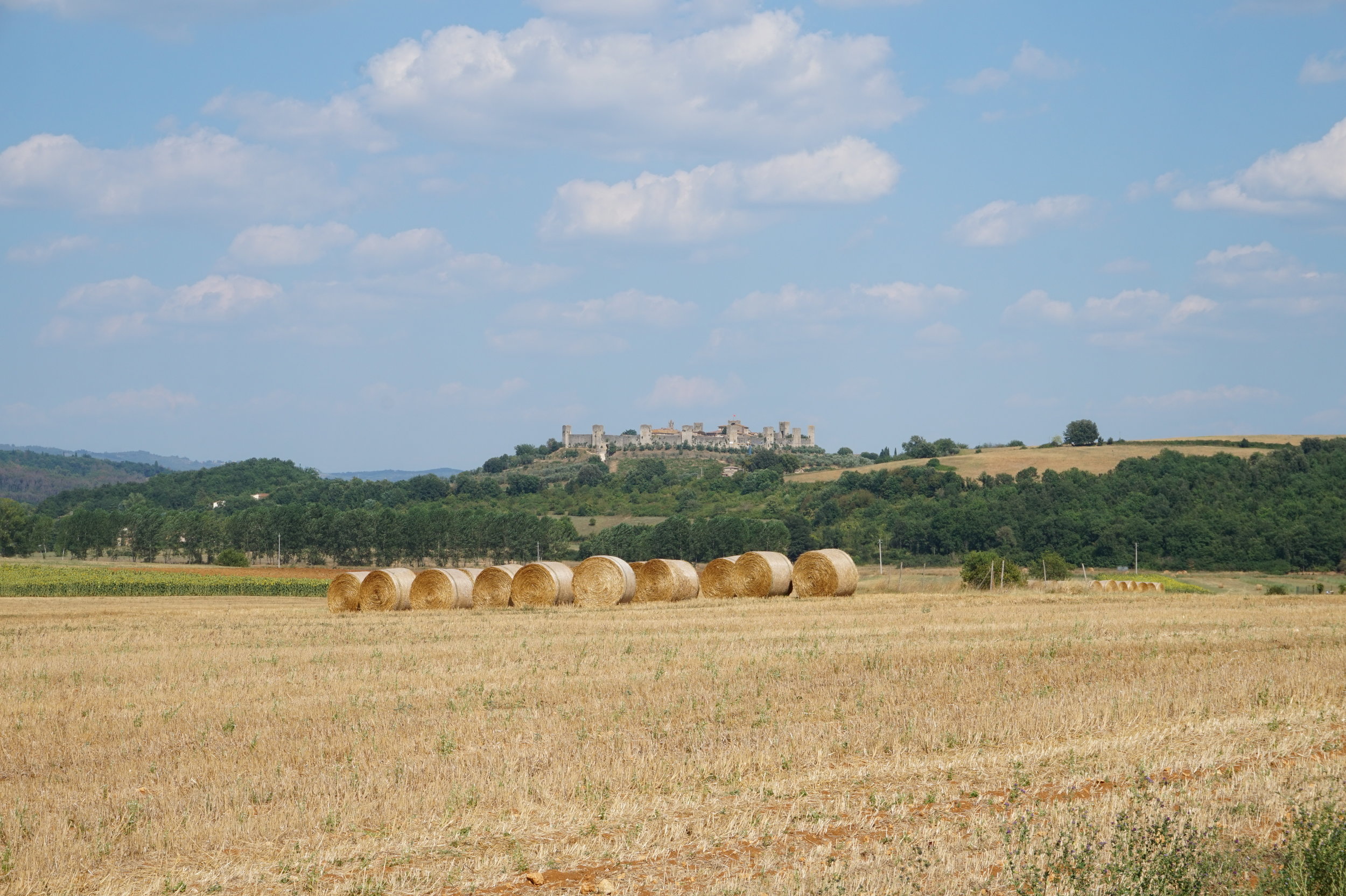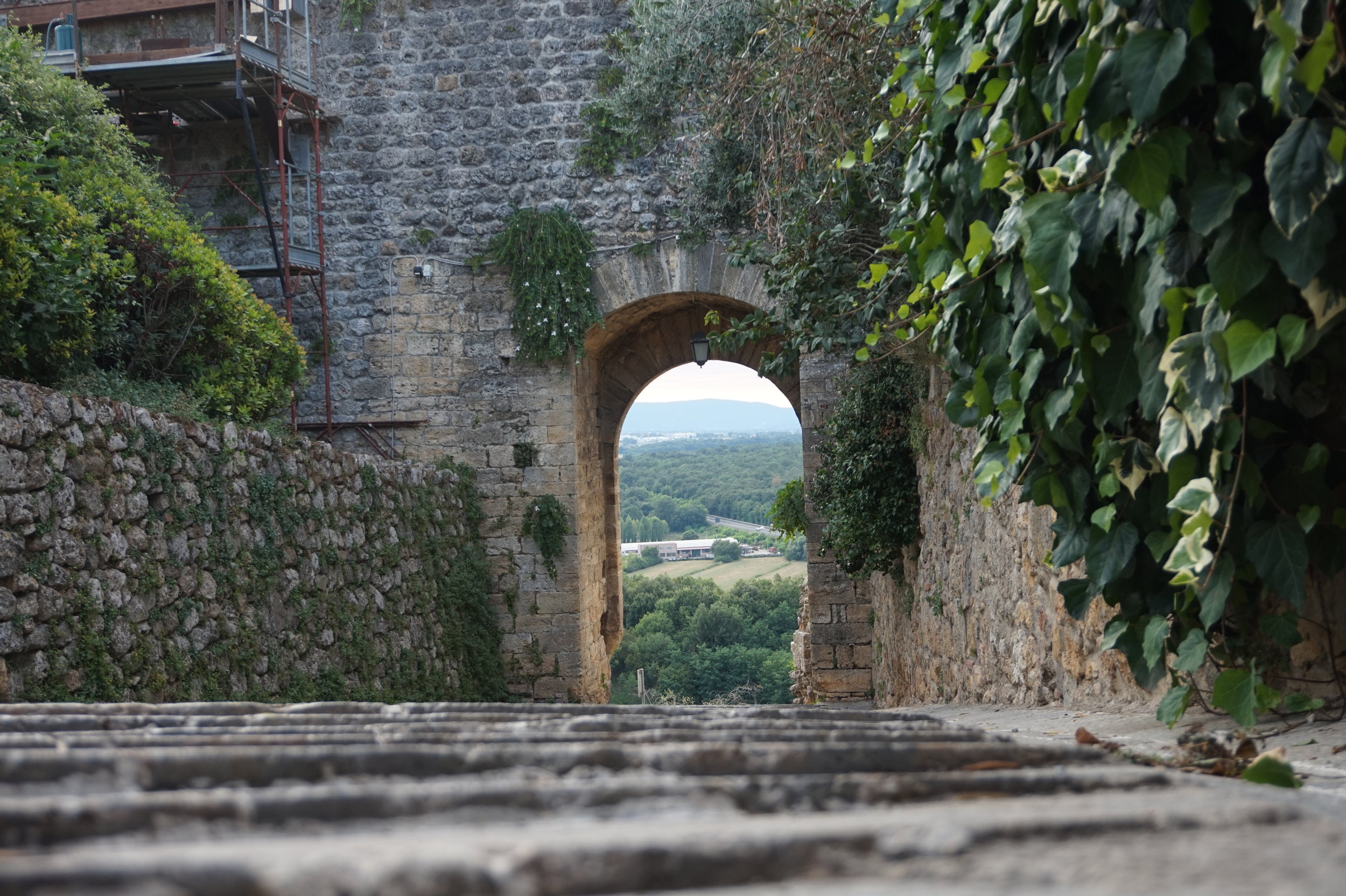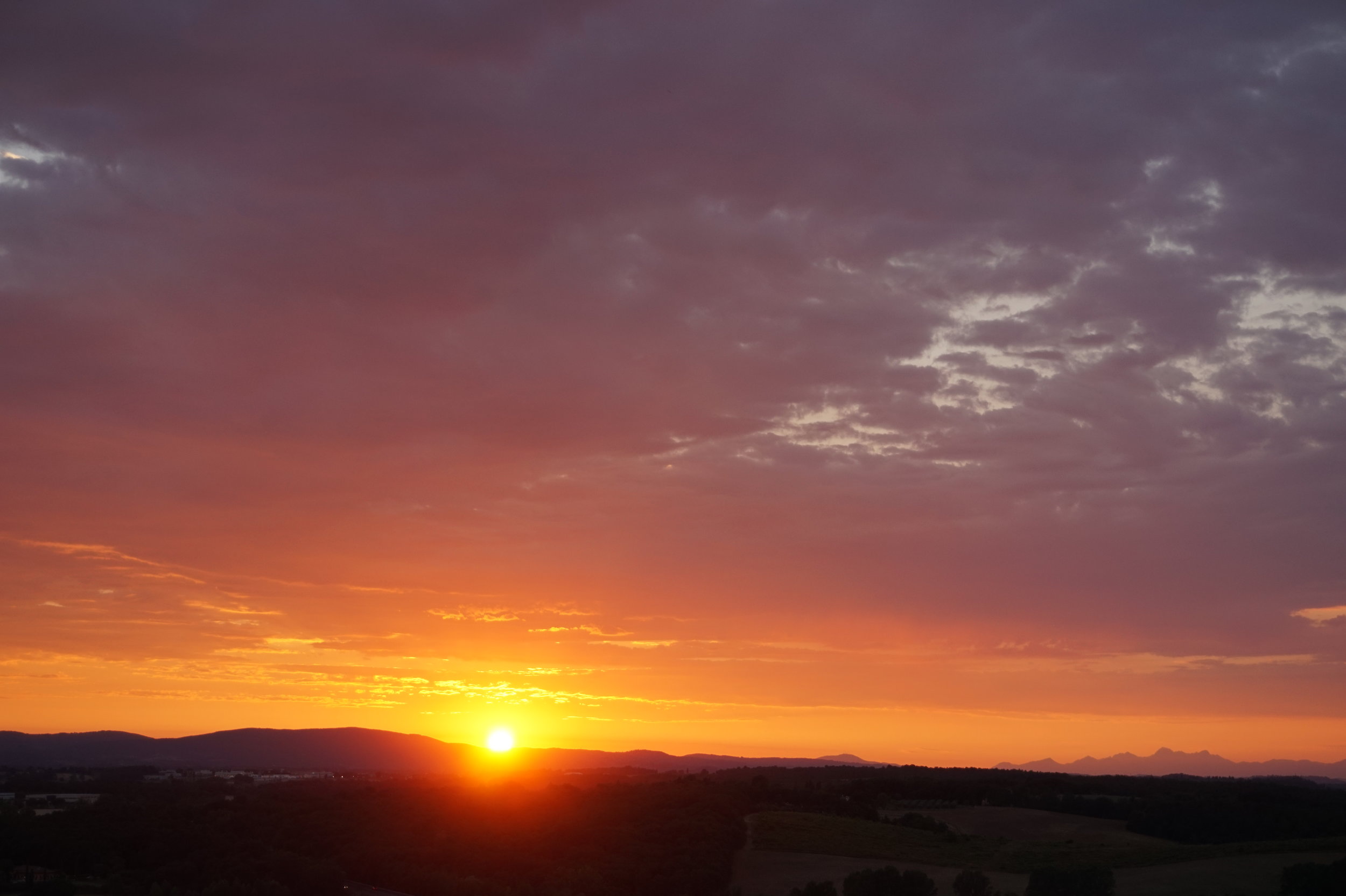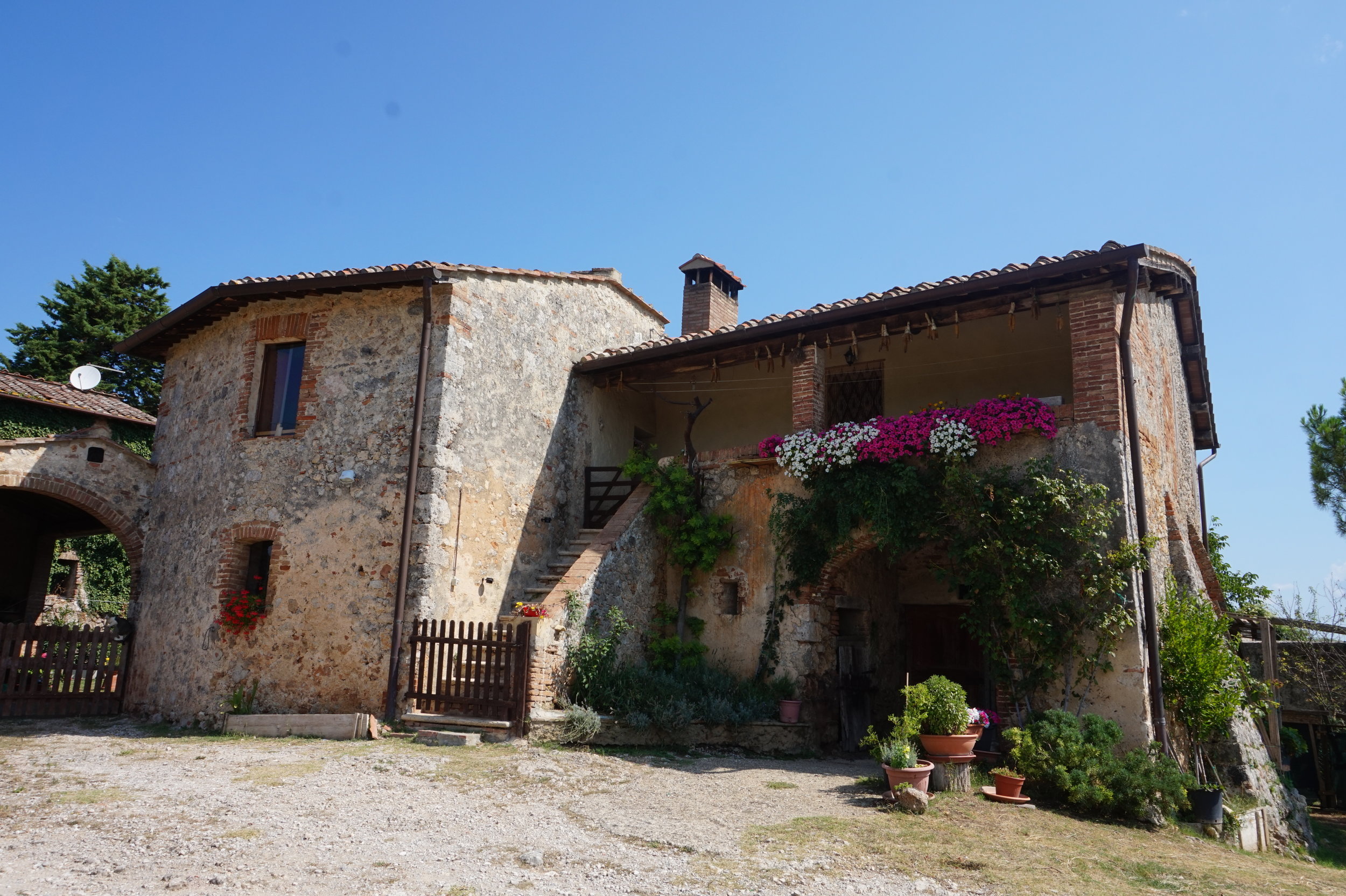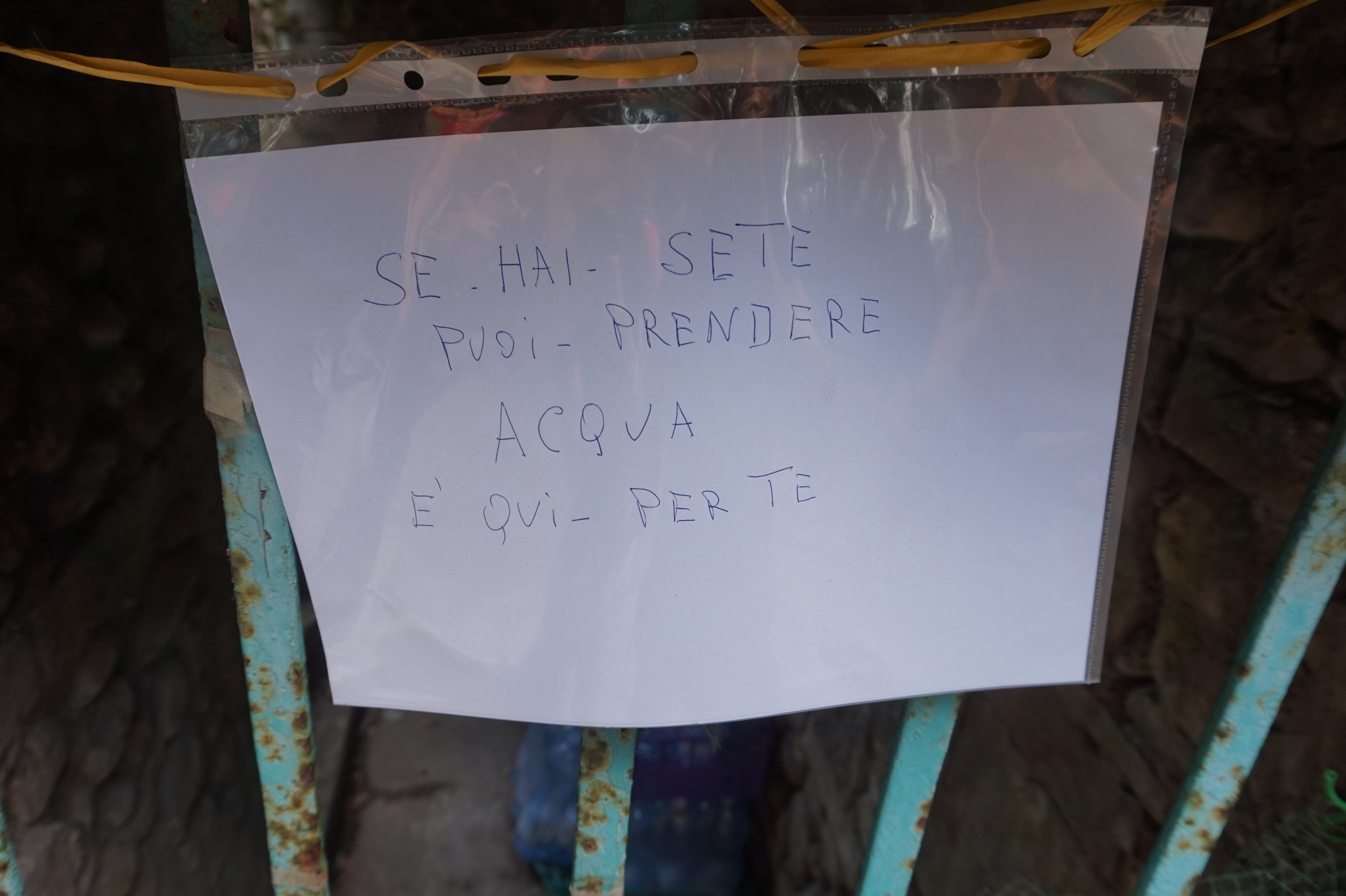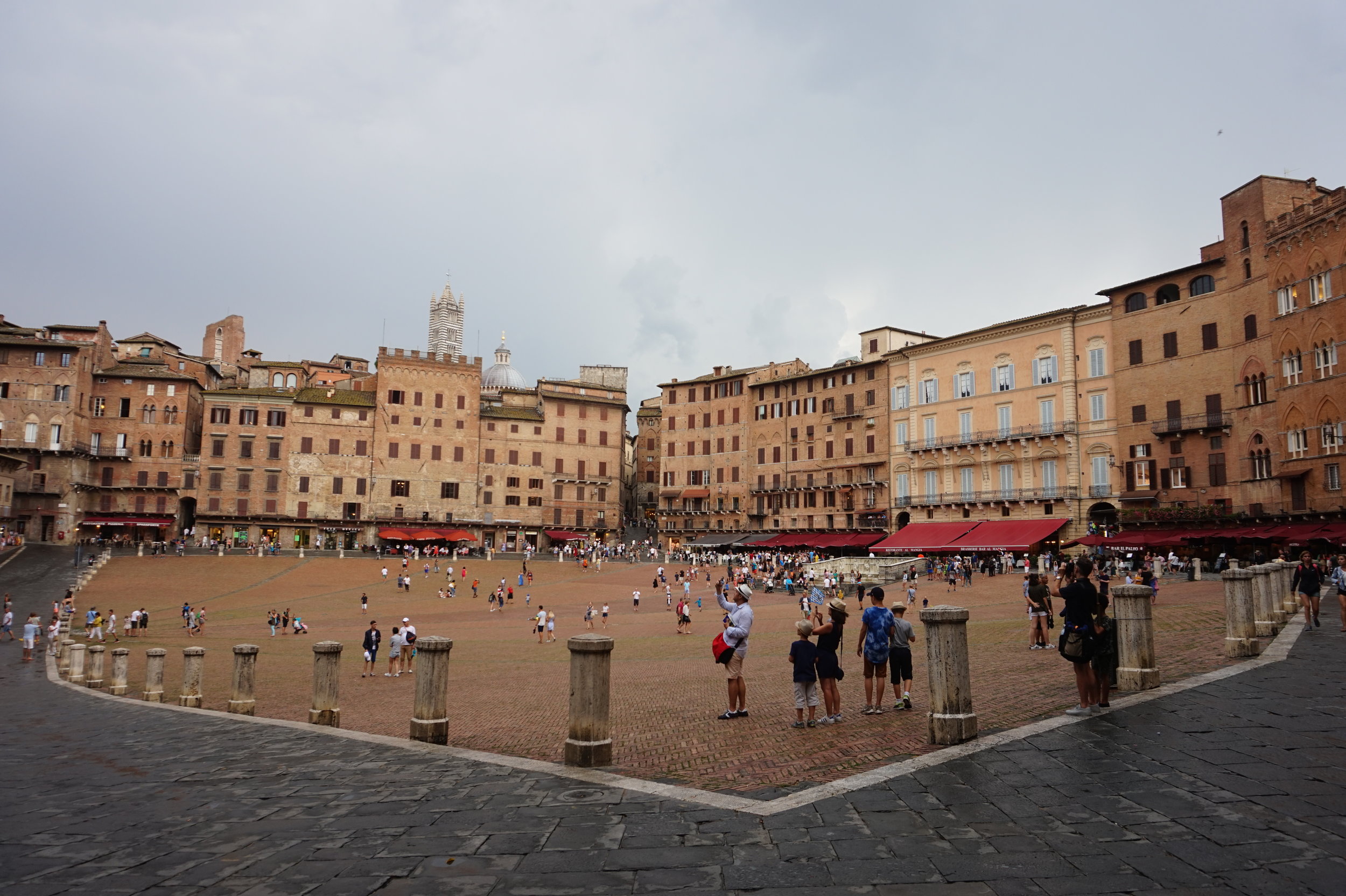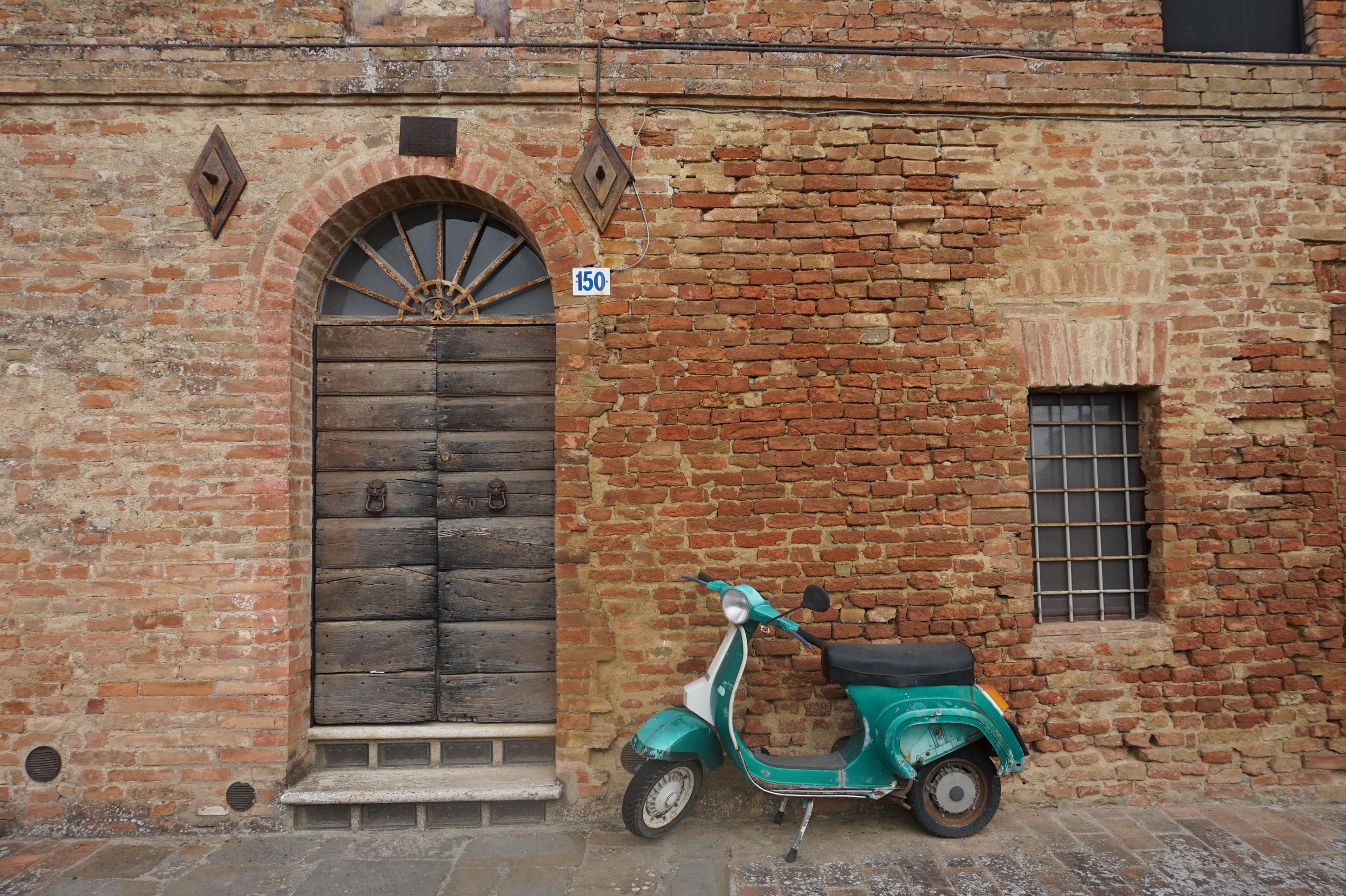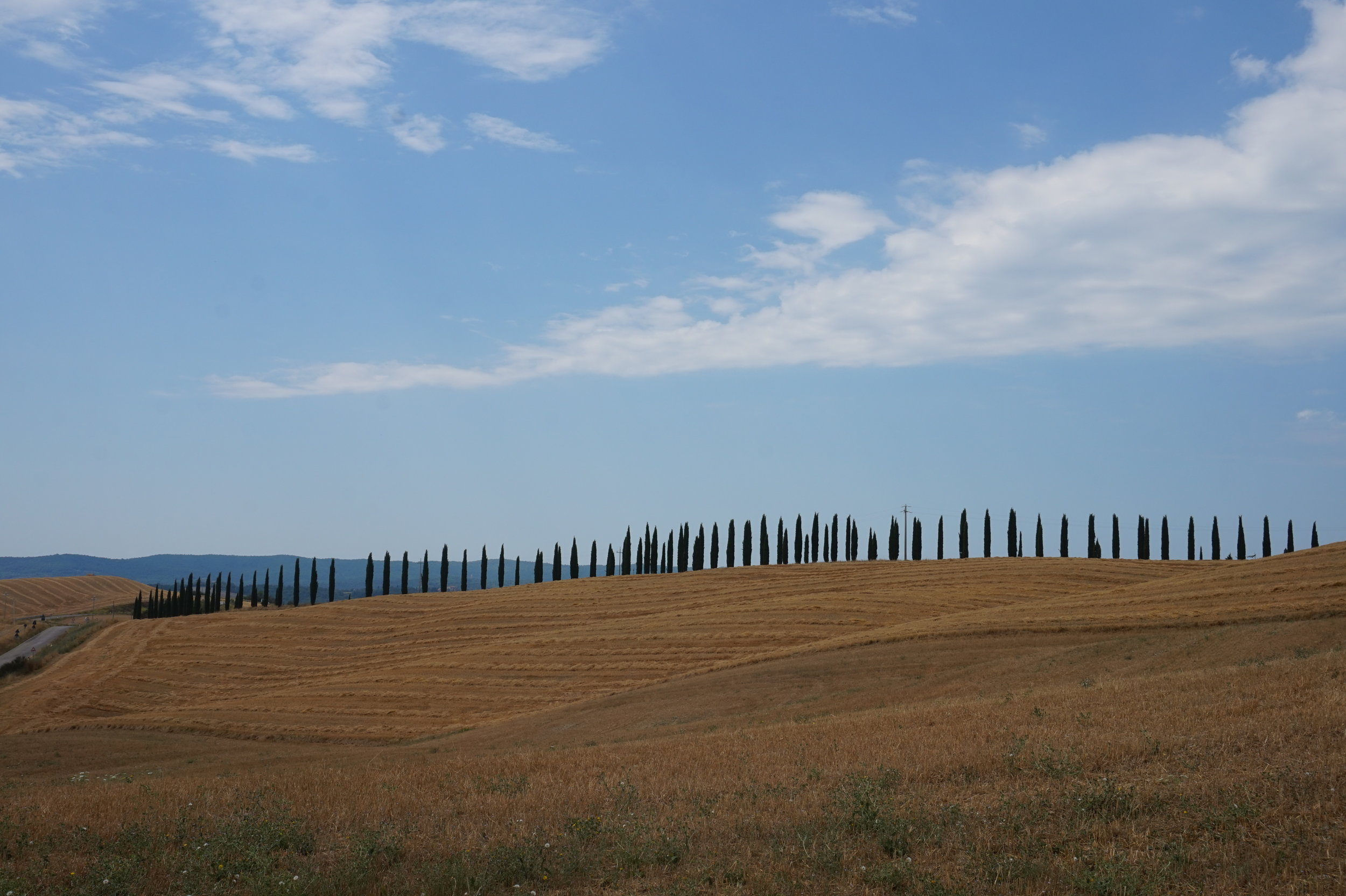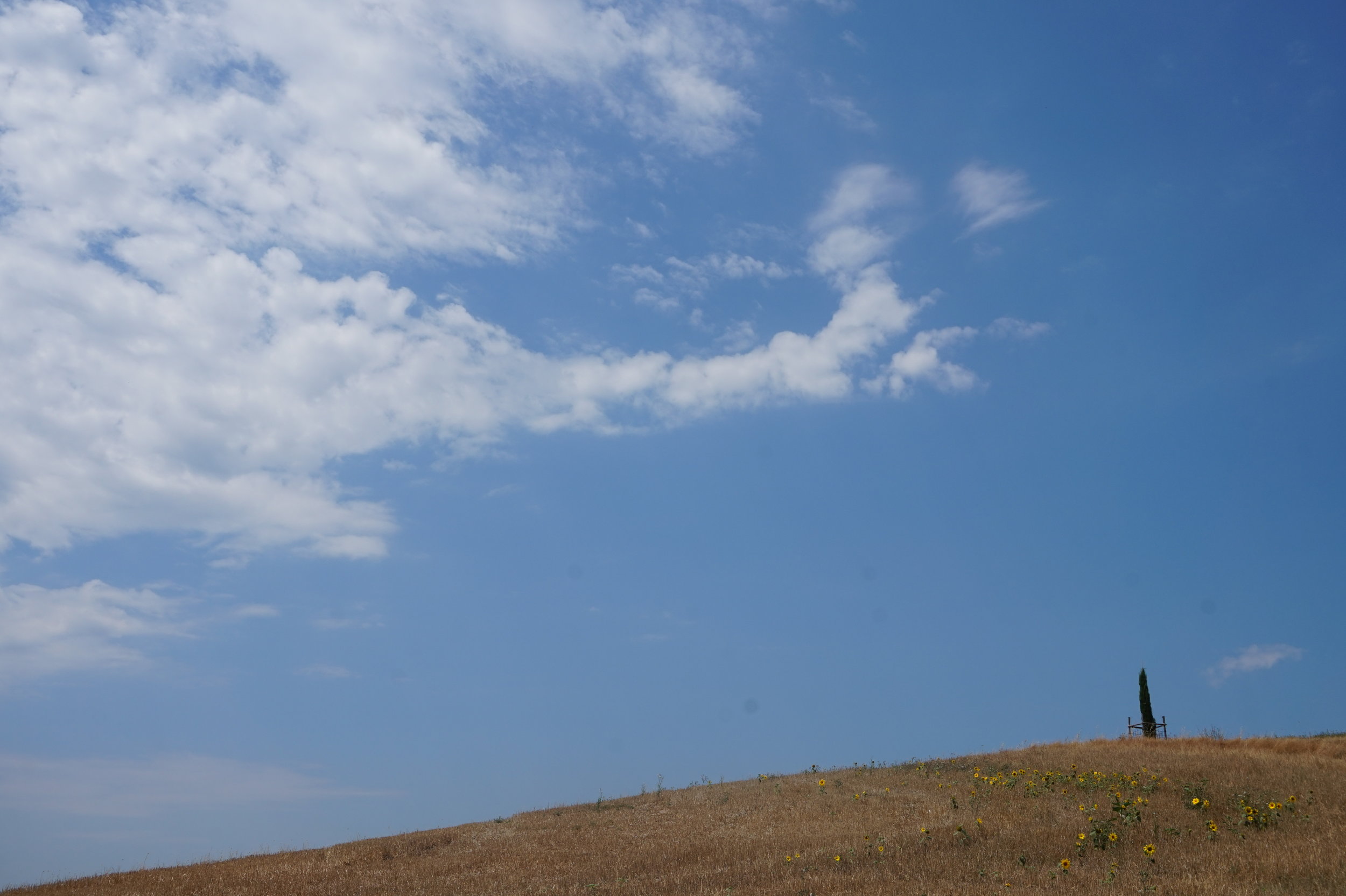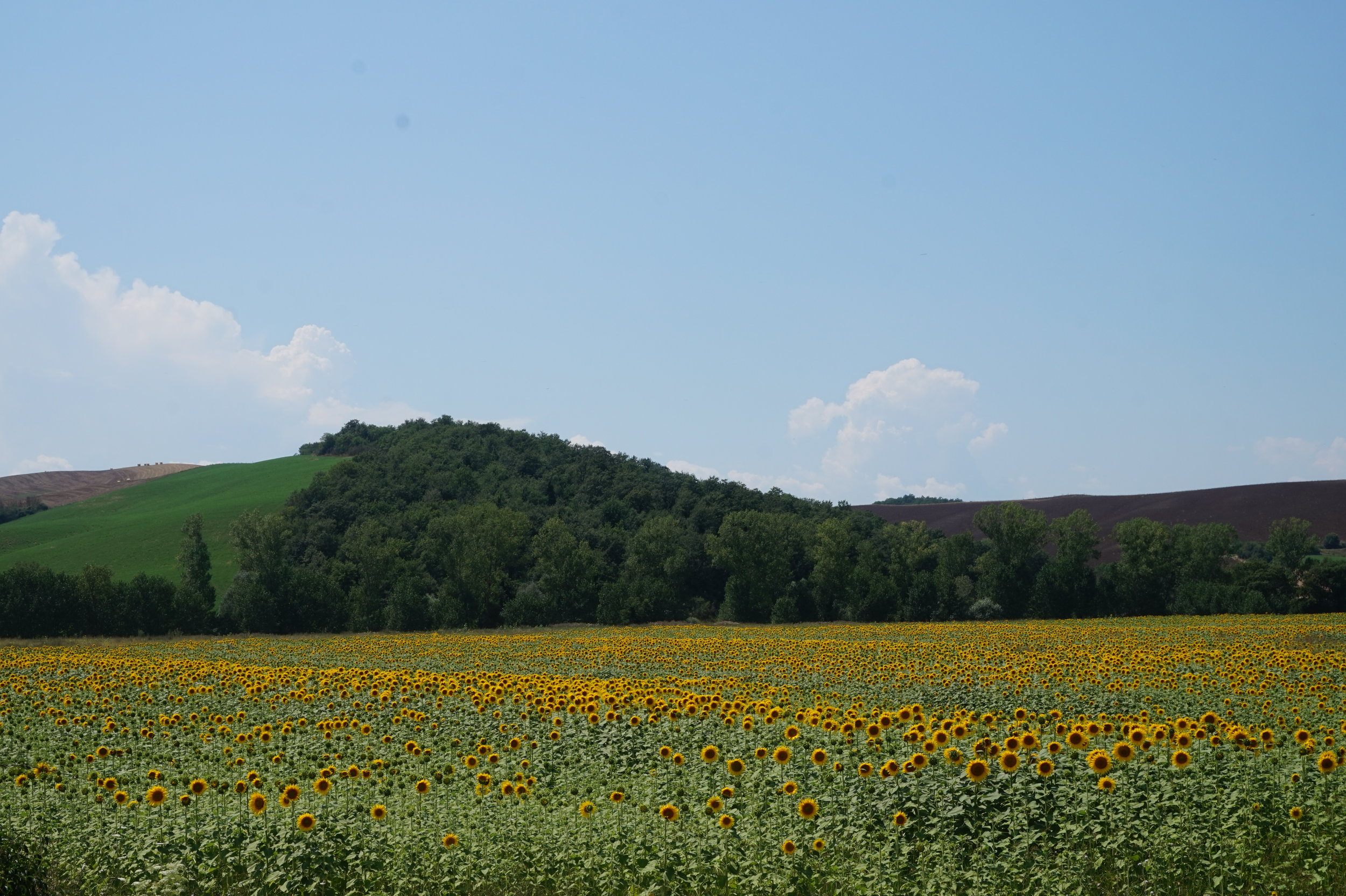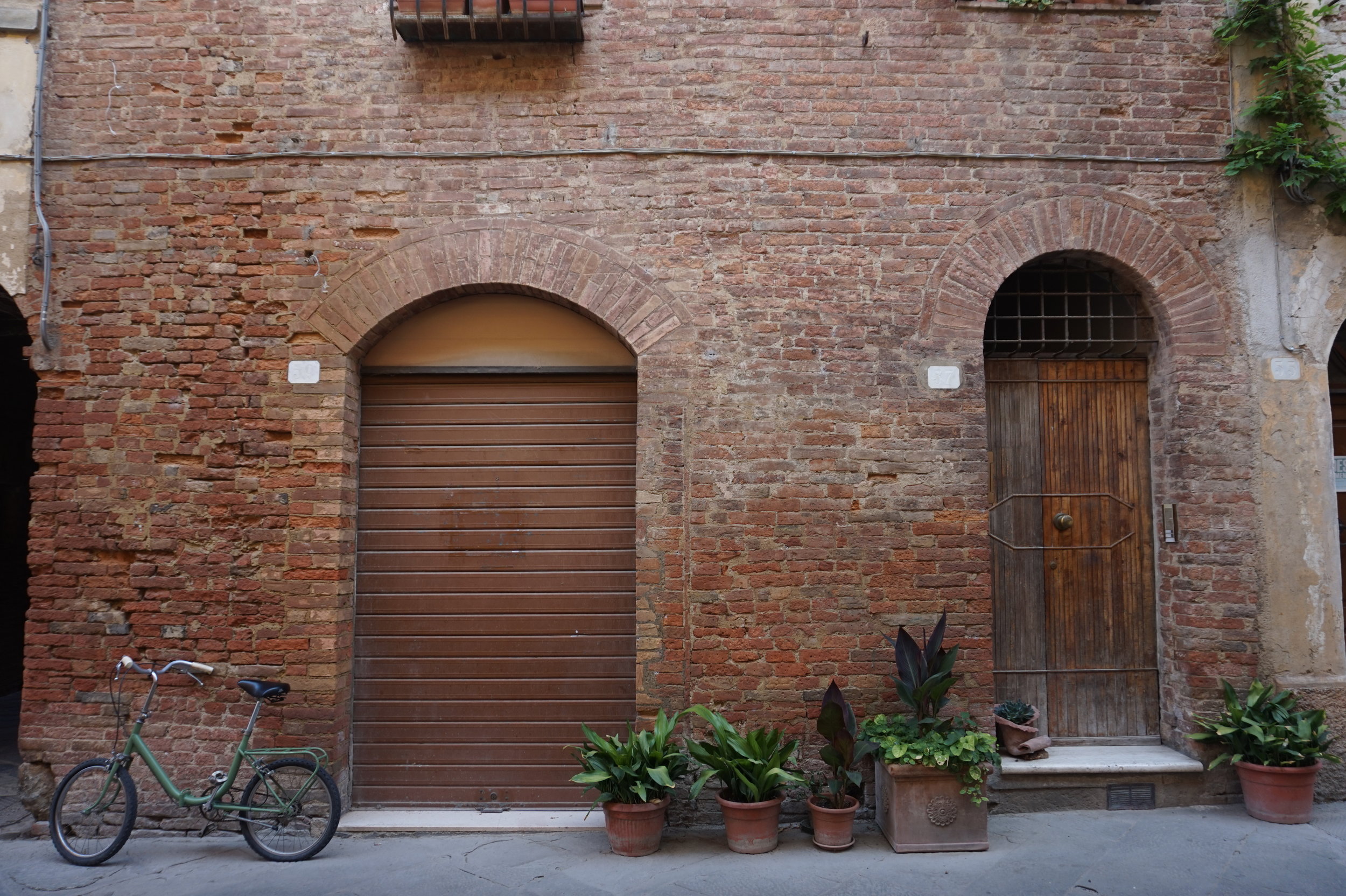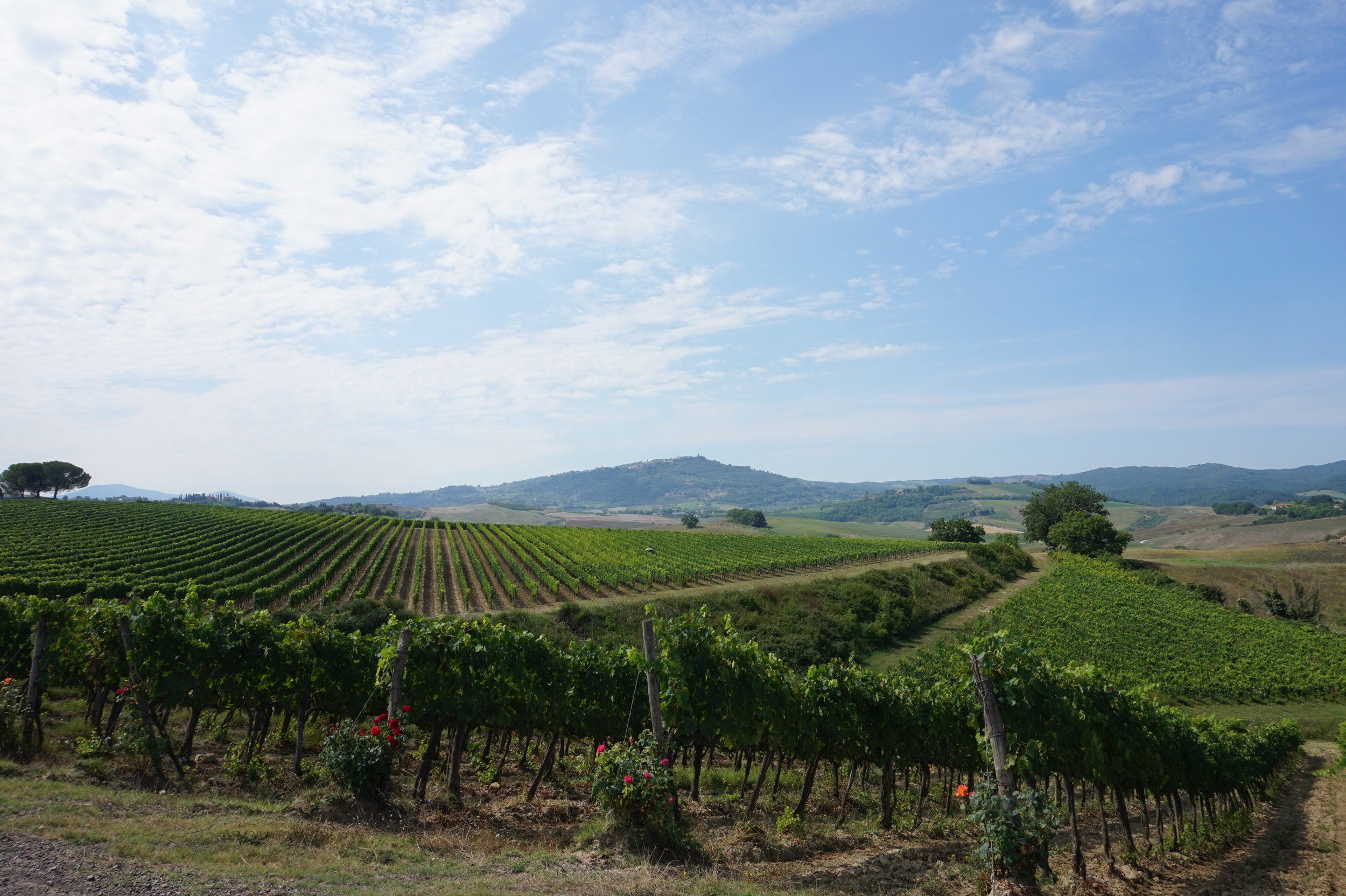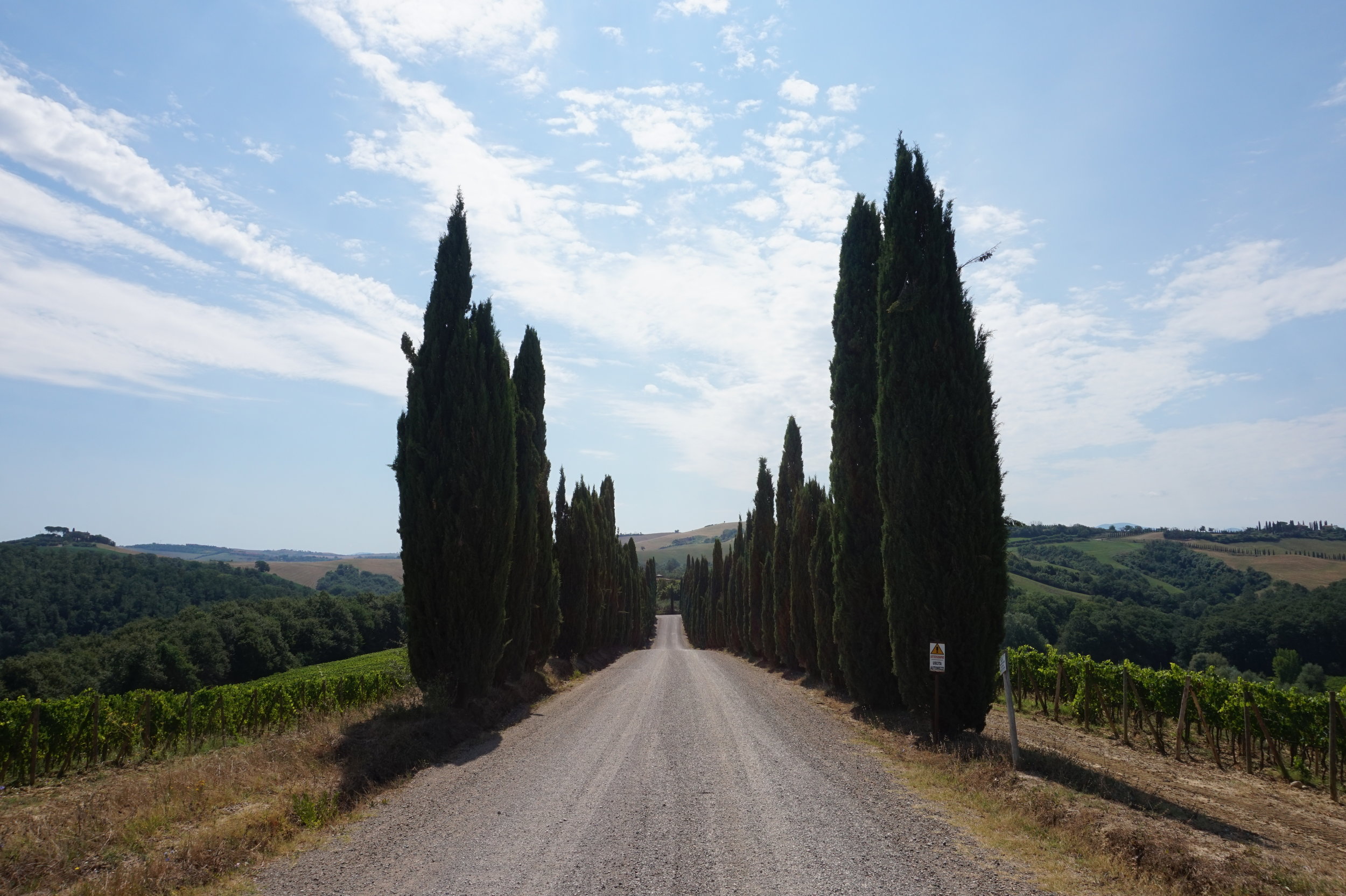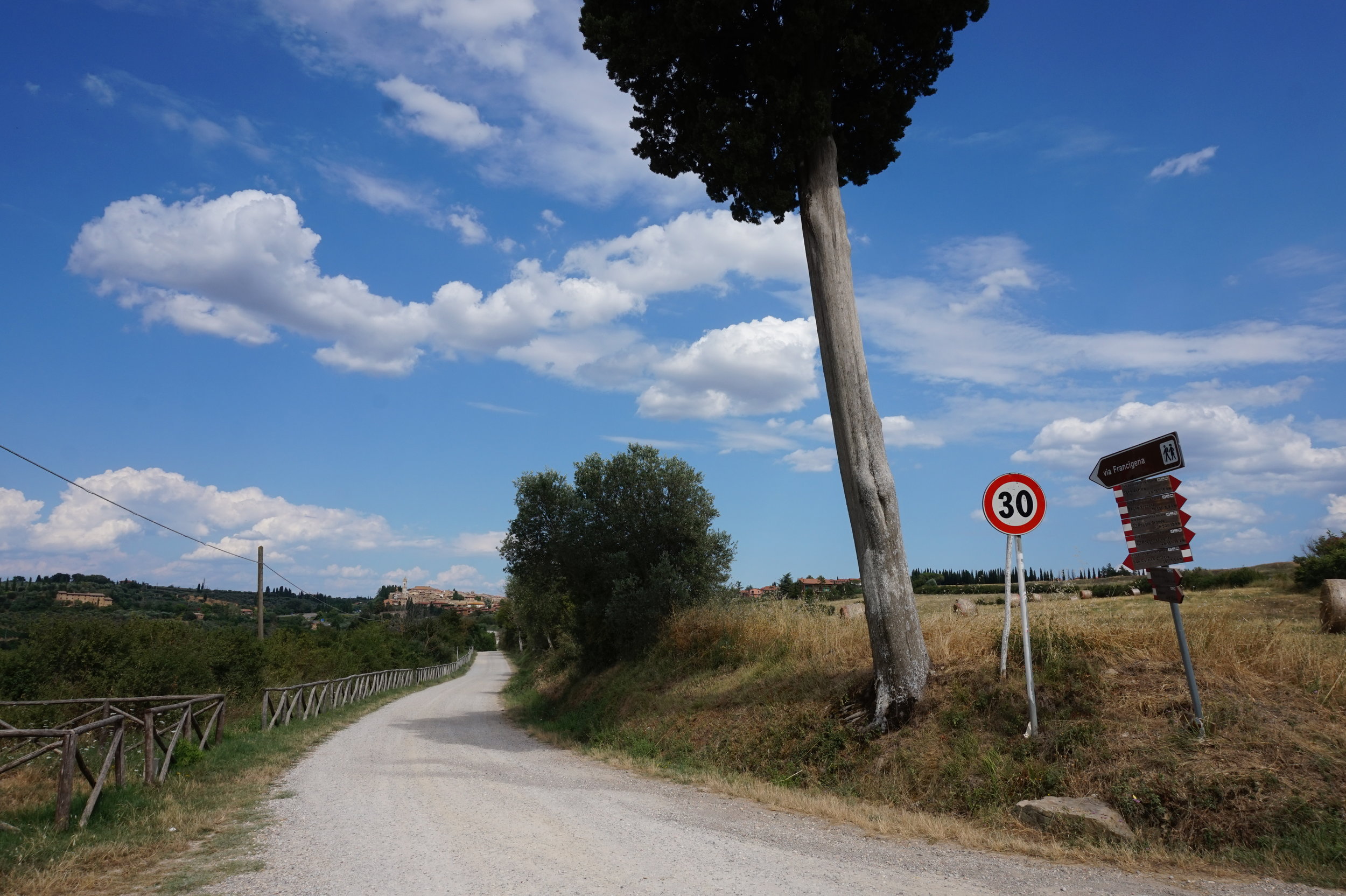Punto Sosta 2km, the sign read.
We looked at each other. This stop wasn’t on the app. We’d checked it faithfully the night before, and believing we’d otherwise be left dry until we reached Siena, managed to buy a couple of panini to save for breakfast before the bar in Monteriggioni closed around 7pm.
It was one of the only hostels along the route that didn’t serve breakfast as part of the night’s tariff. So we’d made coffee with our portable gas and moka pot in our big double room and eaten the panini and some foccacia we had leftover there. Furnished with antiques, with its panoramic views from the top of the walled town across the Tuscan landscape, and its own bathroom, it was somewhat different from the image conjured up by the word ‘hostel’: think multi-bed dorm rooms with shared bathrooms that I had stayed in through most of my previous travels in Europe.
True to the sign, 2km later we stumbled on Marcello’s front door: Punto Sosta La Villa.
A group of about ten Americans was there, feasting on Nutella and fresh bread, biscuits and cappuccino from a machine set up under a big outdoor area in the front yard. When you’re walking up to 30km a day, an extra sandwich for morning tea isn’t exactly going to bust your diet, so we knocked up a couple ourselves.
Retired, Marcello set up the rest point for pilgrims a few years ago after they started knocking on his door, asking for water. He says he enjoys the company and the sense of community. In return, he asks passers-by only for a donation. We left him with advice on where to next pick up some water (‘Inside the cemetery after you come out of the woods, just coming into Siena, there’s a tap’ – and there was!) and an alterative and more shady route to get there too.
That spirit of generosity and kinship was representative of our six-day trek on the Tuscan leg of the Via Francigena. Once a series of paths that provided safe and strategic passage for the Lombards, who in the 7th century were competing for territory with the Byzantines, the path was also an important trade route, and was cemented as a religious pilgrimage after its documentation by then-Archbishop of Canterbury, Sigeric the Serious when he returned to Canterbury in 990 having being ordained. His handwritten pages are still considered the authority on the route. The Via Francigena also forms part of a trinity of religious pilgrimages that stretch from Santiago di Compostela, to Rome, and finally, Jerusalem. In full, it covers more than 2000km from Canterbury to Rome, rambling through the Champagne region, the French Alps, Great War battlefields and many other sites of historic and cultural significance.
In practical terms, this religious element means much of the accommodation, at least in the 150km stretch we completed over six days is still church-owned: prices are low (we paid around 20 euro per head per night) and even in summer, beds were readily available. There is a variety of hostel and bed and breakfast style accommodation available, depending what you prefer. In bigger centres like Siena, although there are more options, I think it’s best not to deviate too far from the recommended spots, primarily because you don’t want to end up too far away from the trail itself; also because the nature of the walk lends itself to humble and relatively simple digs. It’s important to get yourself the Pilgrim Passport: a credential that gives you access to accommodation sometimes reserved for ‘official’ pilgrims. If you choose to walk with us this is something we can organise for you.
Having kicked off in San Miniato, near Pisa, we tackled one section per day. Given each of these sections is up to 30km, completing more than one per day is probably not viable, nor enjoyable.
From our departure point, we trekked to Gambassi Terme on the first night, San Gimignano on the second, then Monteriggioni, Ponte d’Arbia and San Quirico d’Orcia on the final night.
There were times during the trip when I felt like I was experiencing complete sensory overload: the views of kilometres rolling hills, vivid blue skies, wildflowers, hay bales, vineyards and old castles rendered me literally speechless. You need time to take it all in: it’s called slow travel for a reason, so don’t rush it. Part of the reason travelling by foot is so special is that you earn every kilometre, and so you can enjoy every step, getting more out of it than you ever would any other way.
The biggest surprise for me, coming from Australia, was that water and food were so readily available the whole time. We are so used to carrying our water and food with us that public fountains to fill up at, and the option to sit down at the end of the day with a glass (or bottle…) of wine and some good, local food, is both a novelty and a total joy. From a trattoria with homemade everything and the most delicious pici al pesto to a tiny bar in Ponte d’Arbia that served up one of the best antipasti plates I’ve seen – and trust me, I’ve sampled a few – we were very well fed.
I am so looking forward to getting back on this track and seeing some more of what it has to offer. I reckon we will probably pick up again from San Quirico d’Orcia and head for Radicofani. Finishing the walk into Rome is something I’d really love to do.
If you’re interested in undertaking your own guided Via Francigena experience, contact us (link).


